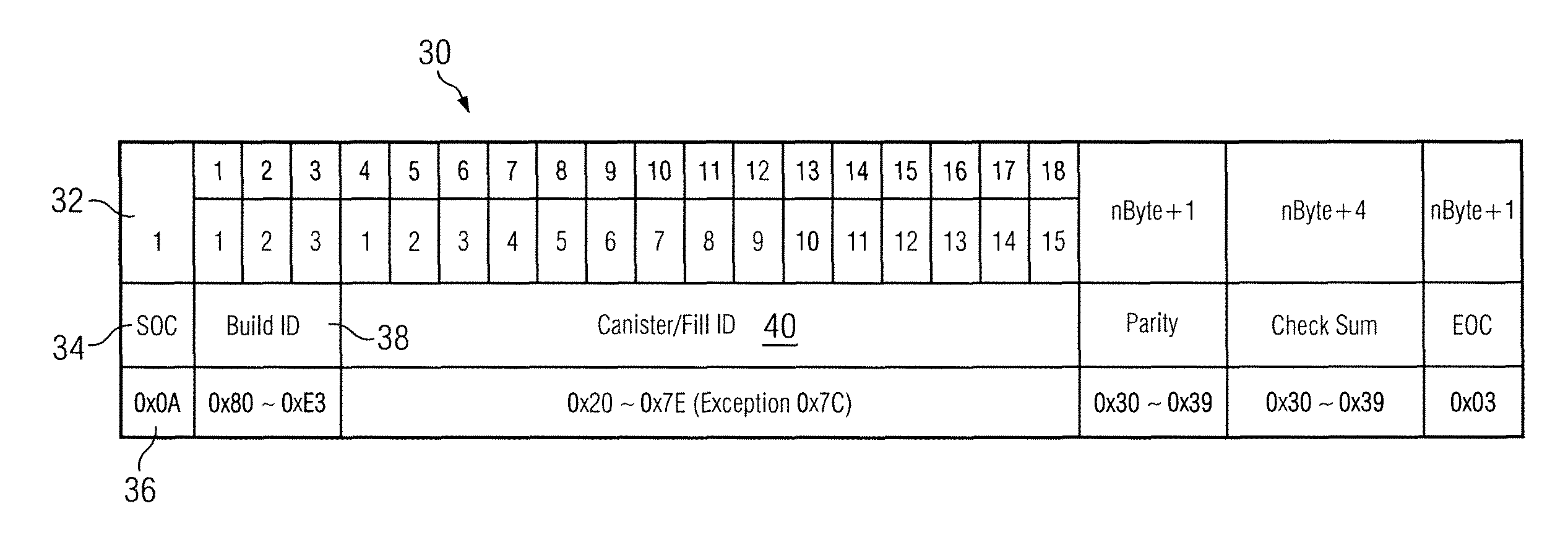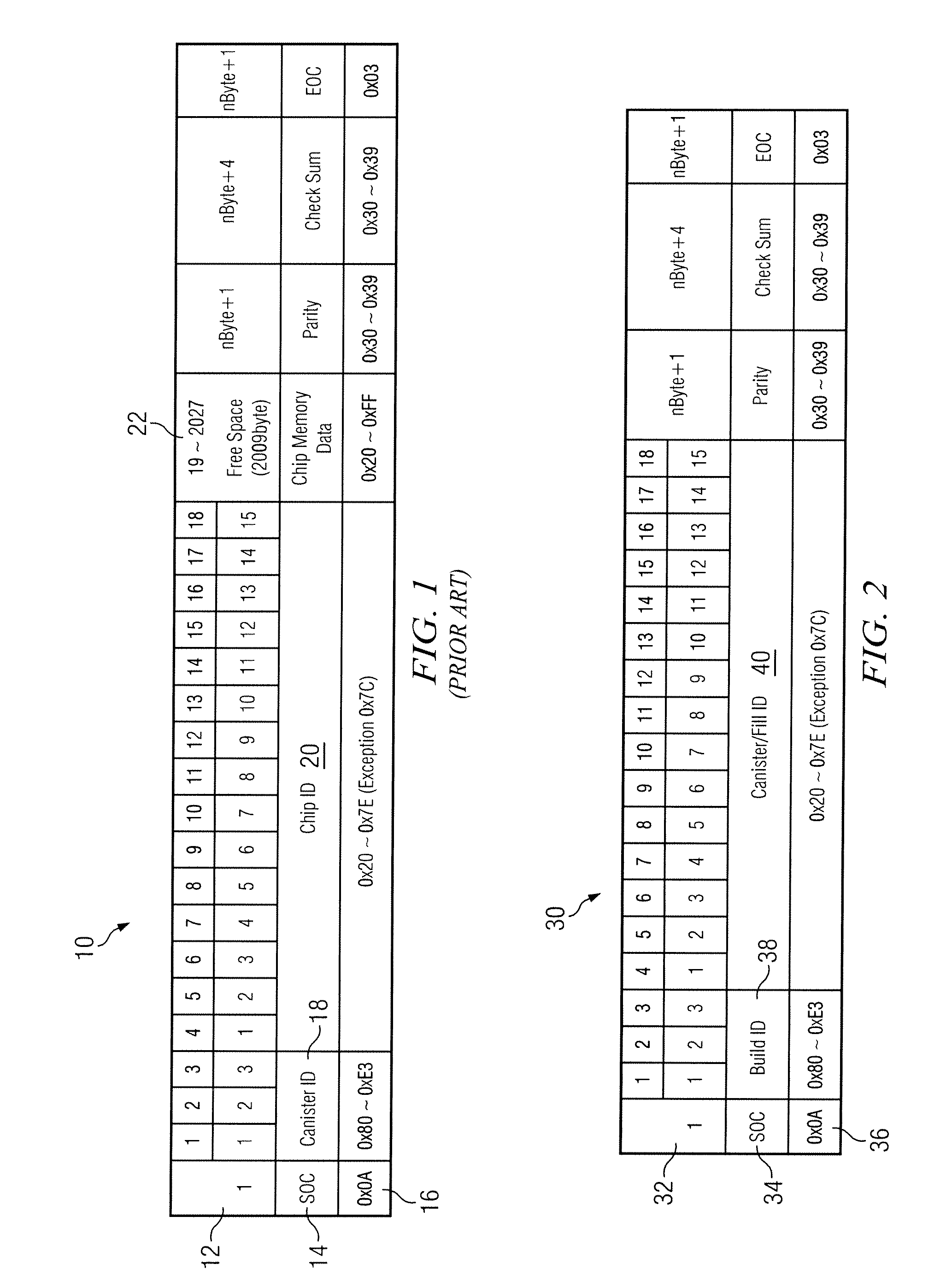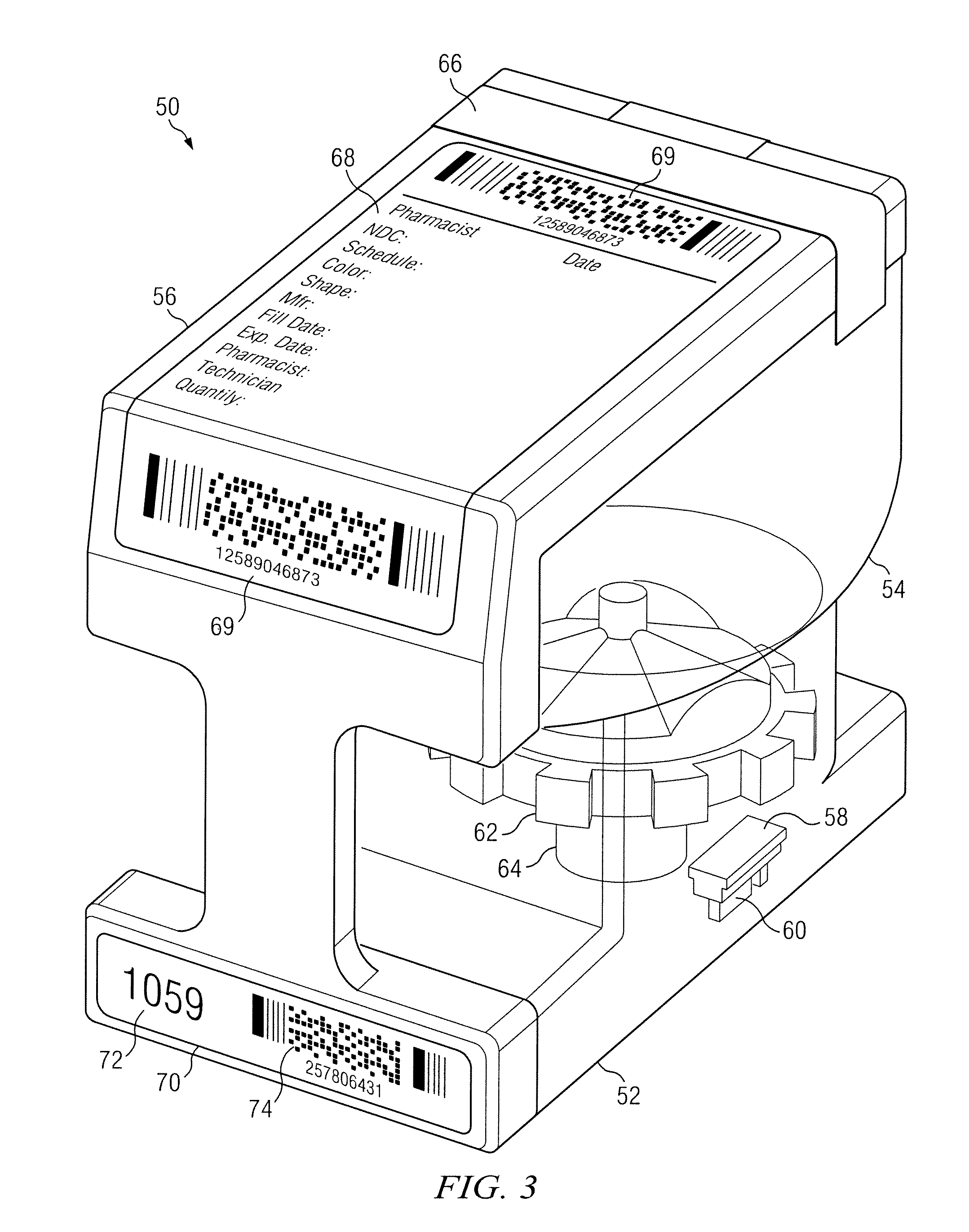On site prescription management system and methods for health care facilities
a health care facility and management system technology, applied in the field of medication prescription and dispensing, inventory management and control, information processing in resident health care facilities, can solve the problems of abounding opportunities for errors, grave consequences, and very substantial inefficiencies in the pharmaceutical delivery system, and achieve the effect of reducing the delay in processing item data
- Summary
- Abstract
- Description
- Claims
- Application Information
AI Technical Summary
Benefits of technology
Problems solved by technology
Method used
Image
Examples
second embodiment
[0048]In a second embodiment, FIGS. 9A and 9B depict a basic operation of the system. FIGS. 10 through 14 illustrate other basic aspects of the methods of using the system of FIGS. 5, 6, 7 and 8 to dispense prescription medications in a health care residence or facility. Some of these operating relationships may be understood by referring to FIGS. 11A through 11F. Several specific communicating links and signal flows in FIG. 7 that represent new flows of information in pharmaceutical management processing systems are depicted by highlighted lines.
third embodiment
[0049]In a third embodiment shown in FIG. 2, reduction of the data content of the canister memory chip to the combination of a build code ID and a canister fill ID, each requiring only relatively small amounts of data, enables a very substantial reduction in processing time resulting in much less inherent delay in processing the system inventory, the tracking of dispensing problems, and the dispensing of prescriptions and prescription information. The canisters themselves are described in FIGS. 3 and 4, and the process of using the modified canister system is illustrated in FIG. 8. Detailed data regarding the prescription drug information associated with the build code ID and the canister fill ID is stored in the main database accessed by the management system and referred to only as needed.
[0050]The build code ID may comprise a four digit code representing the structural configuration (stored in a database) of the canister that is compatible with a particular group of medications. ...
fourth embodiment
[0051]In a fourth embodiment, a method for coordinating data being processed by the various entities in the system is provided through assignment of ID information to enable synchronization of the data of the various stations on the network as needed. It is this coordination process that enables the system communication efficiencies leading to substantially improved processing speed and the ability to proactively manage the forward-looking inventory control aspects of the system.
[0052]Beginning with the detailed description, FIG. 2 illustrates an example of a more efficient canister memory format for a prescription medication according to one embodiment of the present invention. The figure depicts the layout of the canister memory space 30 of the present invention having a first row 32 specifying the byte population of the memory in each of the identified groups, a second row 34 describing the data content stored in the memory 30, and a third row 36 defining the hexadecimal value ra...
PUM
 Login to View More
Login to View More Abstract
Description
Claims
Application Information
 Login to View More
Login to View More - R&D
- Intellectual Property
- Life Sciences
- Materials
- Tech Scout
- Unparalleled Data Quality
- Higher Quality Content
- 60% Fewer Hallucinations
Browse by: Latest US Patents, China's latest patents, Technical Efficacy Thesaurus, Application Domain, Technology Topic, Popular Technical Reports.
© 2025 PatSnap. All rights reserved.Legal|Privacy policy|Modern Slavery Act Transparency Statement|Sitemap|About US| Contact US: help@patsnap.com



